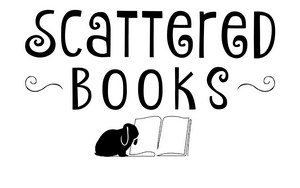
02 Dec Don Quixote Synopsis and Review

Thesis: “Don Quixote” is not only a story about the adventures of a delusional knight but also a profound exploration of reality, imagination, and the human condition.
Reading Age: 15+
Bookshop.org helps to support independent booksellers. Please purchase “Don Quixote” on Bookshop.org. Or download the audiobook on Libro.FM
Plot Summary
“Don Quixote” is a rich narrative that spans across two parts, each with its own distinct flavor and set of adventures. In the first part, Alonso Quixano, an aging gentleman from La Mancha, becomes obsessed with the chivalric ideals touted in books he has read. Renaming himself Don Quixote, he decides to become a wandering knight, accompanied by his loyal squire, Sancho Panza. Don Quixote’s reality is blurred by fantasy, leading him to mistake inns for castles, windmills for giants, and commoners for noble characters.
The second part, published a decade later, shows a more self-aware Don Quixote, who has become a character not only in his own story but also in the world around him, as his fame from the first part’s publication precedes him. The tone here is more reflective and satirical, as Cervantes explores the interplay between fiction and reality.
This summary captures the essence of Don Quixote’s journey, highlighting the humor, pathos, and irony that Cervantes masterfully injects into the narrative.
Themes
- Illusion vs. Reality: At its core, “Don Quixote” is an exploration of the boundary between reality and illusion. Don Quixote’s adventures blur this line, offering deep insights into the nature of perception and belief.
- The Idealism of Chivalry: The novel satirizes the then-popular chivalric romances, questioning the values and practicality of knightly ideals in the modern world.
- The Transformation of Characters: As the story progresses, both Don Quixote and Sancho Panza undergo significant character development, reflecting on their beliefs and experiences.
Character Descriptions
- Don Quixote: An aging gentleman who becomes a self-styled knight after losing his sanity. Idealistic and brave, yet often delusional.
- Sancho Panza: Don Quixote’s squire, a farmer with a pragmatic approach to life, often provides a contrast to his master’s idealism.
- Dulcinea del Toboso: A peasant woman whom Don Quixote idolizes as the perfect lady despite never having met her.
Analysis
Strengths
- Rich Characterization: The characters in “Don Quixote” are remarkably well-developed, each with distinct voices and arcs.
- Narrative Depth: The novel’s layered narrative offers both humor and profound philosophical insights.
- Timeless Satire: Cervantes’ critique of social norms and literary conventions remains relevant and impactful.
Weaknesses
- Pacing and Length: Modern readers may find the book’s length and pacing challenging.
- Language: The original Old Spanish language can be inaccessible to contemporary readers without a good translation.
Literary Devices
- Metafiction: Cervantes was ahead of his time in using metafictional techniques, blurring the lines between author, reader, and character.
- Irony: The novel extensively uses irony, especially in the contrast between Don Quixote’s idealism and the harsh realities of his world.
Evaluation
Miguel de Cervantes’ “Don Quixote” is a fundamental piece of world literature and a remarkable work of comedic satire. While it may be daunting for first-time readers due to its length, those who engage with it are rewarded with a rich exploration of complex themes and an enthralling narrative. It is highly recommended for readers interested in classic literature and those who appreciate a blend of comedy and profound thematic depth.
Audience Suitability
Ideal for readers interested in classic literature, satire, and philosophical novels.
Comparisons
This novel can be compared to other classics that explore the nature of reality and idealism, like “Alice in Wonderland” or “Gulliver’s Travels.”
Recommendation
“Don Quixote” endures as a beloved masterpiece, enchanting readers for centuries with its blend of humor and depth. Its exploration of the human condition through the lens of a deluded yet endearing knight-errant and his faithful squire remains as relevant and compelling today as it was in the early 17th century. Scattered Books highly recommends Don Quixote!
Publisher: Ecco Press
Publish Date: April 26, 2005
Pages: 992
Language: English
ISBN: 9780060934347








